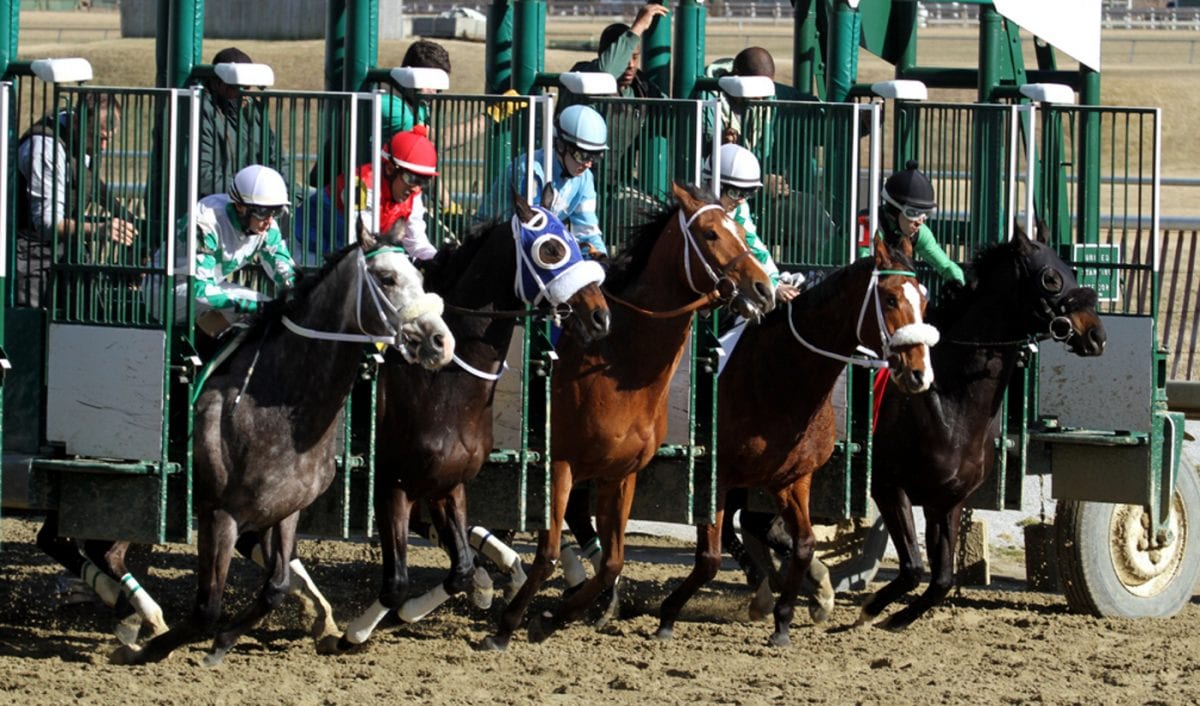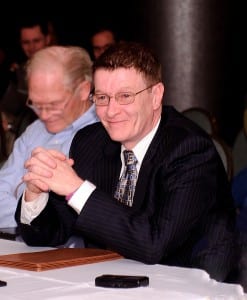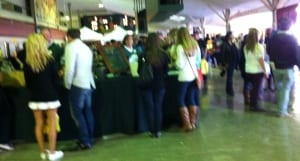In Part 1 of this two-part interview (here) with Maryland Jockey Club president Tom Chuckas, we discussed the last few years in racing. Here, in part two, we turn our attention to the future of racing both in Maryland and nationwide.
THE RACING BIZ: Looking to the future, it seems like racing faces some pretty significant challenges. Nationwide, handle has dropped substantially the last few years, and the industry has really struggled to find answers. What’s your take on that?
CHUCKAS: I think this is a fair statement: I think that as more and more racing organizations look at things, I think the general consensus is the way we’ve done business has to change.
That’s on a multitude of levels. Nothing specifically, but it’s very competitive out there for the disposable dollar. We need to change with the times, and we need to make adjustments in our business models that will allow us to be successful in the future. If you look back over the last 10, 20 years, we can’t be doing the same things we did then because they don’t work.
But there’s a couple important facts: wagering has declined over the last few years, but when you look, there’s a lot of people still wagering. There is a significant number of wagering dollars being spent on horse racing.
THE RACING BIZ: There’s also, and this is a point you raised earlier, this question of where dollars come from, and over the last few years, more and more of the wagering dollar has come through online and advance deposit wagering, rather than through on-track or traditional off-track facilities. How do you look at that issue?
CHUCKAS: My sense is more and more tracks are taking a look at what they sell their product for. You have the responsibility to put on a product; is there a fair share coming from your simulcast partners? We still incur all the costs [of putting on the program]. So, is it fair? I think you’re going to see those rates go up.
THE RACING BIZ: One of the real challenges has to be getting people to come to the track. That’s a complaint almost everywhere these days.
CHUCKAS: The lifestyles have changed. At one time, the only way you could bet on a horse race was to come out to the racetrack. With the advent of faster paced living, you’ve got computer technology and so on in play. It’s a different environment.
What you see from the racetrack’s perspective, you get people to come out on a Saturday. You come out with five of your buddies, you have a couple beers or a steak — it’s somewhat of a camaraderie thing — and you bet the horses. But a lot of people work [during the week]. What happens more frequently with technology is that they bet on one race on the computer and then go back to doing their work. A lot of it is about convenience. So, for the racetrack, as opposed to getting them to the track, how do you get the product to them? And that’s the million dollar question
[pullquote]If you look back over the last 10, 20 years, we can’t be doing the same things we did then because they don’t work.” — Tom Chuckas[/pullquote]THE RACING BIZ: Any thoughts on the answer?
CHUCKAS: We’ve tried for years to come up with a program to [get bettors to come out to play simulcasts when there is no live product] and it’s been minimally successful. You can see by the numbers. The live will get people here. It’s been very difficult on the import, almost impossible.
And you can’t necessarily build a large brick and mortar OTB. They’re not as popular as they were, and Maryland doesn’t have a lot of urban centers where they would work.
One thing we’re really looking into is a kiosk-type of thing — in a location where, when you’re having lunch or whatever, you can make a wager.
That’s what I’m talking about in terms of getting the product out to them. I think you’re always going to have your Saturdays and Sundays that’ll be OK. Your big days will get people. But during the week it’s very difficult. I think the philosophy has to change where you have to get them as opposed to them coming to you.
THE RACING BIZ: Should you look to run at more opportune times?
CHUCKAS: I don’t disagree. We would have to work this out with our partners, the horsemen and the Racing Commission. I’m not disagreeing that you could do that.
At night, plus you can do more with dining and other experiences that you can’t do during the day time.
That’s the other thing we’ve tried to take a look at here, and it’s been difficult for us. To a lot of people who come to the racetrack, with 25 minutes between races… if you’re not reading past performances, what do you do for the 20 or 25 minutes?
THE RACING BIZ: Should customers look to see any new gaming opportunities in coming years? For example, some tracks, such as Oaklawn, have been very successful using “instant racing” to bolster purses.
CHUCKAS: My sense from Annapolis and the Legislature — I believe right now the position is they’ve undertaken the gaming legislation and they’ve dealt with it. They’re going to see how these things develop and make their decisions as they move forward. I don’t see any real change in Annapolis at this time.
THE RACING BIZ: Hard to believe, with all the cold and snow we’ve had, but we’re about to head into the Pimlico meet.
CHUCKAS: I’m excited about the Pimlico meet. It’s always nice to change — a breath of fresh air, the staff likes it, I think the public likes it, and you’re heading into your boutique meet with some of your best race days, the Black-Eyed Susan and the Preakness. We’re excited.










. So, for the racetrack, as opposed to getting them to the track, how do you get the product to them? And that’s the million dollar question
How about Gabby doing a review of the next day’s card on a local cable channel. Get people who would like to bet during the week interested by having a local program like they do on HRTV.
Larry